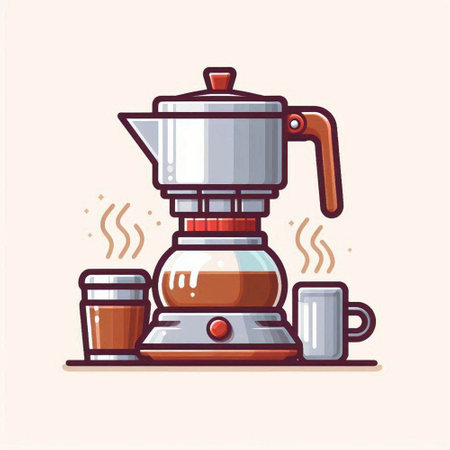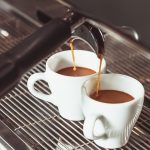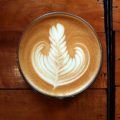Why Water is the Secret Ingredient
When it comes to brewing a stellar cup of pour over coffee, most folks immediately think about the beans: their origin, roast level, or grind size. But there’s another crucial player in your morning ritual—water. In fact, water makes up more than 98% of your cup! Despite this, its importance often gets overlooked. The quality and temperature of your water directly influence how well flavors are extracted from your coffee grounds, ultimately shaping the taste in your mug.
If you’ve ever wondered why your home brew tastes different from your favorite specialty café—even when using the same beans—the answer often lies in the water. Minerals present in water interact with compounds in coffee, affecting both extraction and flavor clarity. Too little mineral content and your coffee can taste flat; too much, and it could be overly bitter or dull. Plus, the temperature of the water impacts how efficiently these flavors are drawn out during brewing. Understanding and controlling these variables can take your pour over skills to the next level.
Let’s break down what’s really happening when you pour hot water over those freshly ground beans:
| Water Factor | Role in Pour Over Coffee |
|---|---|
| Mineral Content (Hardness) | Affects extraction efficiency and flavor complexity |
| Purity | Removes off-flavors caused by chlorine or contaminants |
| Temperature | Controls speed and completeness of flavor extraction |
The right combination of mineral balance and temperature not only helps highlight the unique notes of your chosen beans but also ensures a consistently delicious cup. So next time you prep for a pour over, remember: while great coffee starts with quality beans, it’s the water that truly brings out their best.
2. Hard vs. Soft Water: What’s the Difference?
When brewing pour over coffee, the quality of your water can be just as important as the beans or the brew method. One of the most significant factors is water hardness—a measure of dissolved minerals, primarily calcium and magnesium, in your tap water. Understanding the difference between hard and soft water is crucial for every home barista aiming to perfect their cup.
Understanding Water Hardness
Hard water contains higher concentrations of minerals, while soft water has fewer minerals due to filtration or natural sources. These minerals directly impact extraction during the brewing process, affecting flavor, mouthfeel, and even how your coffee interacts with your equipment.
How Minerals Influence Your Brew
| Water Type | Main Minerals | Impact on Coffee Flavor |
|---|---|---|
| Hard Water | Calcium, Magnesium | Enhances extraction; can lead to overly bitter or dull flavors if too high |
| Soft Water | Sodium (after softening) | Tends to under-extract; results in flat or sour cups with muted complexity |
A moderate amount of calcium and magnesium helps extract desirable flavors from coffee grounds, but too much can overpower delicate notes or cause scale build-up in your equipment. On the flip side, very soft water may not pull enough flavor from your beans, leading to a lackluster cup.
Practical Ways to Adjust Water Chemistry at Home
- Test Your Tap Water: Use affordable test strips or meters to determine mineral content.
- Filtered Water: If your water is extremely hard or soft, consider using filtered or bottled water designed for coffee brewing.
- Add Minerals: Some enthusiasts use mineral packets (like Third Wave Water) to achieve optimal hardness for pour over brewing.
- Boil and Cool: Boiling water then letting it cool slightly can precipitate some excess hardness minerals, making it more suitable for coffee.
Tuning your water’s chemistry doesn’t have to be complicated—small adjustments can make a noticeable difference in every pour over you brew.

3. Filter It Right: Choosing the Best Water for Great Coffee
If you’re brewing pour over coffee in the U.S., the water you use can make or break your cup. With tap, filtered, and bottled options readily available, making the right choice depends on where you live and what’s coming out of your faucet.
Tap Water: Know What’s in Your Pipes
Across America, tap water quality varies wildly—think soft Seattle rainwater versus hard Midwestern groundwater. Many municipal supplies are treated with chlorine or chloramine, which can add unwanted flavors to your brew. If you notice an odd taste in your tap water straight from the glass, it’ll show up even more in your coffee. Check out your city’s annual water report (usually online) to find out about minerals, hardness, and additives.
Filtered Water: The Home Barista’s Friend
Most American homes benefit from some kind of filtration. Even a simple pitcher filter like Brita or PUR can remove chlorine and some sediments, greatly improving both taste and aroma. For serious coffee lovers, under-sink reverse osmosis (RO) systems offer next-level purification—but be aware that RO removes almost all minerals, so you might want to remineralize your water for optimal flavor extraction.
Comparison Table: Water Types for Pour Over Coffee
| Water Type | Main Features | Best For | Tips |
|---|---|---|---|
| Tap Water | Varies by region; may contain chlorine or high mineral content | Convenience; areas with soft water | If it tastes good plain, try it! Otherwise, filter first. |
| Filtered Water | Reduces chlorine and odors; moderate minerals retained | Most households; everyday brewing | Replace filters regularly for best results. |
| Bottled Water | Consistent quality; typically low in contaminants | Traveling or areas with poor tap water | Avoid distilled—look for “spring” or “drinking” water with balanced minerals. |
Bottled Water: Consistency On-the-Go
Bottled water is popular for its reliability, especially if you’re traveling or living somewhere with unpleasant tap water. Look for brands labeled as “spring water” or “drinking water”—these usually have a mineral content close to what’s considered ideal for coffee (about 50-150 ppm total dissolved solids). Avoid distilled or pure RO bottled waters unless you plan to add minerals back in.
Regional Tips for American Coffee Lovers:
- Northeast & Pacific Northwest: Typically have softer tap water—may only need basic filtration.
- Midwest & Southwest: Harder water is common—use a filter to reduce excess minerals that dull flavor.
- Southeast: Watch for chlorine taste; a carbon filter can work wonders here.
- Cities vs. Rural: Urban areas often treat water more heavily; rural wells may have high mineral content but less chemical treatment.
The bottom line? Start with the best-tasting water available to you—filtered if needed—and experiment until your pour over is as vibrant as it should be. Don’t underestimate how much this simple step can upgrade every cup!
4. Temperature Talk: Finding the Sweet Spot
When it comes to pour over coffee, temperature isn’t just a number—it’s a make-or-break factor for flavor extraction. Using the right water temperature helps unlock those subtle tasting notes that make specialty coffee shine. But what exactly is the ideal brewing temperature? Let’s break it down.
Why Temperature Matters
Coffee extraction is all about balance. Too hot, and you risk over-extracting bitter compounds; too cool, and you’ll under-extract, ending up with a weak or sour cup. The sweet spot usually falls between 195°F and 205°F (90°C – 96°C), which coaxes out nuanced flavors without going overboard.
Recommended Temperatures for Pour Over Methods
| Roast Level | Ideal Temperature (°F) | Tasting Notes Highlighted |
|---|---|---|
| Light Roast | 200-205 | Citrus, floral, complex acidity |
| Medium Roast | 197-202 | Balanced sweetness, chocolatey, nutty |
| Dark Roast | 195-200 | Smooth body, caramel, boldness |
The Science Behind the Numbers
Within the recommended range, small temperature tweaks can dramatically shift your cup’s profile. Higher temps extract more oils and acids quickly—great for light roasts packed with delicate flavors. Lower temperatures slow things down, smoothing out bolder or more roasted beans. Experiment by dialing your kettle up or down a few degrees to pinpoint what works best for your favorite beans.
Pro Tip: Use a Gooseneck Kettle with Temperature Control
If you’re chasing consistency (and brag-worthy brews), invest in a gooseneck kettle that lets you set precise temperatures. This way, you can repeat your results every morning—because nothing says “good morning” in America like a reliably great cup of joe.
5. Common Mistakes & Pro Tips
If you’re chasing that perfect cup, paying attention to water quality and temperature is a must—but even seasoned home brewers can trip up. Below, we highlight some classic pour over mistakes, alongside local barista-approved tips to help you dial in your brew like a pro.
Classic Pour Over Missteps
| Mistake | What Happens | How to Fix It |
|---|---|---|
| Using Tap Water Without Testing | Can introduce unwanted flavors or excessive minerals, leading to bitter or dull coffee. | Test your tap water or use filtered/spring water with 75-150 ppm total dissolved solids (TDS). |
| Ignoring Water Temperature | Too hot scorches the grounds; too cool leaves coffee under-extracted and sour. | Aim for 195–205°F (90–96°C) for optimal extraction. |
| Poor Bloom Technique | Uneven saturation means uneven extraction—some sips taste weak, others too strong. | Gently pour just enough water to saturate grounds, wait 30–45 seconds for the bloom. |
| Overlooking Equipment Cleanliness | Buildup of old coffee oils or limescale can taint flavor. | Clean all equipment thoroughly after each use, including kettle spouts and carafes. |
| Assuming All Waters Are Equal | Coffee can taste flat or muddled if mineral content isn’t right. | Experiment with different bottled or filtered waters. Some U.S. cities have “hard” or “soft” tap water that needs adjustment. |
Barista-Approved Advice from Across the U.S.
- West Coast Wisdom: Many California baristas swear by using slightly softer water for fruit-forward beans—try blending filtered and spring water for balance.
- NYC Know-How: New York’s famously soft tap water works great, but locals recommend a quick TDS check to avoid over-extraction on lighter roasts.
- Midwest Method: Harder water is common; Milwaukee baristas suggest using home filter pitchers or simple reverse osmosis systems for best results.
- Southern Savvy: In areas with well water, always test for iron and other off-flavors—a countertop filter can make a world of difference.
Your Next Steps: Level Up Your Pour Over Routine
- Treat your water as an ingredient: Don’t just fill from the tap—test, filter, and tweak until your cup sings.
- Brew with precision: Use a gooseneck kettle and a thermometer. Consistency is key!
- Taste test often: Brew side-by-side with different waters and temperatures to see which brings out your favorite coffee notes.
- Record your recipes: Keep notes of what worked best—baristas do it, so should you!
The Takeaway
Nailing your pour over is all about mastering both water quality and temperature. Dodge these classic pitfalls and follow these barista-backed tips to enjoy café-quality coffee at home—no matter where in America you brew.
6. Bringing It All Together: Making Your Best Pour Over
With water quality and temperature at the core of great pour over coffee, let’s wrap up with a practical checklist. Follow these steps to consistently brew coffee that tastes exceptional, right from your kitchen.
Your Home Pour Over Coffee Checklist
| Step | Action | Pro Tips |
|---|---|---|
| 1. Filter Your Water | Use filtered or bottled water with low mineral content (TDS 75-150 ppm). | Avoid distilled or heavily mineralized water for balanced extraction. |
| 2. Set Ideal Temperature | Heat water to 195-205°F (90-96°C) before brewing. | Use a thermometer or variable-temp kettle for accuracy. |
| 3. Measure Coffee & Water | Use a scale for precise ratio—about 1:16 (coffee:water by weight). | Consistency is key; even small changes impact flavor. |
| 4. Rinse Filter & Preheat Brewer | Pours hot water through the filter and carafe before brewing. | This removes paper taste and stabilizes temperature. |
| 5. Bloom Properly | Pour just enough water to saturate grounds, then wait 30-45 seconds. | This releases trapped gases and sets up even extraction. |
| 6. Pour in Stages | Add water gradually in circles, keeping grounds evenly wet. | A gooseneck kettle helps with control and precision. |
| 7. Monitor Brew Time | Total brew should take 2.5–4 minutes, depending on grind size and dose. | If it’s too quick or slow, adjust your grind next time. |
| 8. Taste & Adjust | Taste your coffee and tweak variables as needed next time. | Sour? Try hotter water or finer grind. Bitter? Cool the temp or coarsen the grind. |
The Takeaway
Mastering pour over at home is about attention to detail—especially when it comes to your water’s quality and temperature. By following this checklist, you’ll create a repeatable process that highlights the unique flavors of your favorite beans every time you brew. Experiment, take notes, and enjoy the journey toward your perfect cup!

